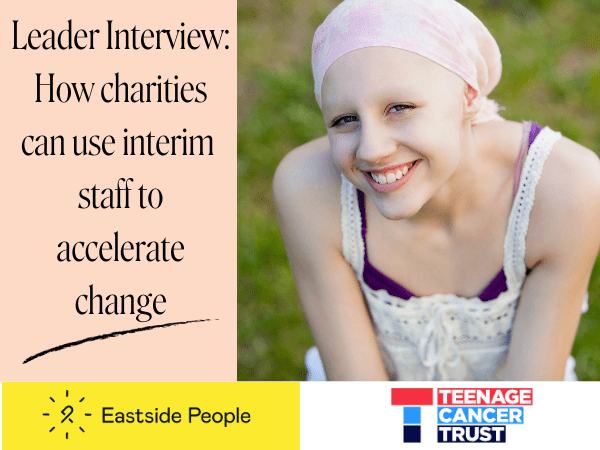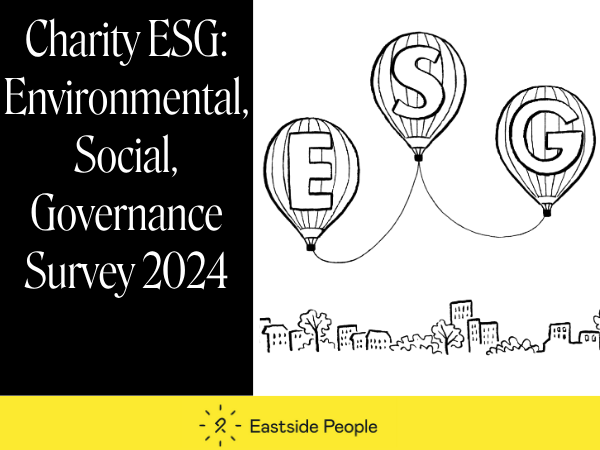Blog by John Sanger, Eastside People Executive Recruitment Consultant and Suneet Sharma, Deputy CEO, Proud Changemakers and Governance and Membership Manager, Association for Language Learning.
Having the right mix of people on your board is the first step to establishing strong governance and is essential for maintaining it. Whether you’re looking to formalise as a charity or are already established, success depends on having the right blend of skills and experience at board level.
However, in many cases there are a number of challenges and factors which present themselves to effective board operation and recruitment:
- Shortages of people wishing to become trustees:
Many charities struggle to attract new trustees, often due to a lack of awareness of the role or misconceptions about the time commitment and responsibilities. The challenge is exacerbated by competition for skilled volunteers and uncertainty about the benefits of becoming a trustee. The NCVO’s survey of the voluntary sector in 2024 highlighted that 79% of respondents had at least one vacant board position with a third of the vacancies being in place for more than a year.
2. Skills balance of the board:
A well-functioning board requires a diverse range of expertise, from financial management to fundraising and governance. However, many boards end up with skills gaps, either due to insufficient recruitment planning or difficulty in attracting candidates with the required knowledge. According to the NCVO the most common skills gaps for small and medium charities are:
-
- Marketing and communications (55%)
- Legal (46%)
- Technology skills (43%)
- Financial (36%)
- Human resources/people management (36%).
3. Knowing you followed best practice:
Effective governance is critical, but trustees often lack confidence that they are adhering to best practices. Without clear guidance, training, or benchmarking against governance standards (such as the Charity Governance Code), boards risk inefficiencies or even non-compliance with regulatory requirements.
4. Making the best use of your limited time:
Many trustees juggle their responsibilities alongside busy careers or personal commitments. The challenge lies in ensuring that board meetings and decision-making processes are efficient, strategic, and do not overburden trustees with operational concerns and for that, you need the right people on your board.
5. Long tenures – succession planning and churn:
While experience is valuable, excessively long trustee tenures can lead to stagnation, reduced innovation, and reluctance to embrace change- the average trustee tenure is placed at six years, according to the Honorary Treasurers Forum. The Charity Governance Code suggests a maximum of nine years tenure, yet despite that the Eastside People 2024 ESG survey found that 37% of charities with income >£1m had at least 1 trustee who had been in place for more than 9 years.
6. Diversity of ideas and individuals:
A diverse board fosters innovative thinking and stronger decision-making. However, some charities struggle to recruit individuals from different backgrounds, limiting fresh perspectives. A 2025 report from Pro Bono Economics and the Charity Commission found that only 8% of trustees were from an ethnic minority background compared to 17% of the general population equivalent to an additional 60,000 trustees. Ensuring representation across different demographics and professional experiences is a key challenge for trustee recruitment.
It can feel overwhelming to think about tackling these challenges. Charity leaders are often juggling a many competing priorities and understandably feel that not everything can be fixed at once. You have to prioritise and sometimes bringing in a little help can take the pressure off.
Here are our suggested solutions to the questions raised above:
- Shortages of people wishing to become trustees:
There are far more suitable and willing trustees out there than you might realise – the key is knowing how to find them. At a minimum, we recommend recruiting openly and advertising widely (on job boards, your website, and social media). However, adverts alone rarely yield strong results. They’re unlikely to reach people who aren’t actively searching for trustee roles, and in our experience, it’s uncommon to fill a trustee vacancy through advertising alone.
Relying on your board’s personal networks is commonly used, but you are drawing from a narrow pool which raises serious concerns around equity, diversity and inclusion (EDI). We consistently get the best results by proactively identifying and approaching potential candidates. It’s not rocket science, but it is time-consuming.
It helps to work with a board recruitment expert who can take the time to understand your organisation’s needs, craft a compelling message, and share that message widely and personally. That includes having meaningful conversations, breaking down barriers, and explaining the role in a way that makes it accessible, especially for those who’ve never considered being a trustee before. Often, people don’t realise they’d make brilliant trustees until someone connects the role to a cause they care about and opens them up to a whole new idea.
2. Skills balance of the board:
Conducting a skills audit clarifies the board’s strengths and identifies gaps that need addressing – where is your board now, and where does it need to get to? This puts you in a position to really hone your search in on the right people to strengthen your board, rather than just increase it.When specific experiences are needed, the challenge is working out where to find those people – and often the answer is in quite unexpected places. It’s also important to assess candidates against those skill requirements.
An experienced charity recruitment partner can help you design a robust assessment process in several stages, testing specialist knowledge as well as including more ‘generalist’ trustee skills (e.g. the ability to work collaboratively and to bring both support and challenge).
3. Knowing you followed best practice:
A good induction and onboarding process will help trustees to feel confident in their role and regular communication and conversations during the onboarding process will help guarantee its success. We suggest that a trustee induction programme should include the following as a minimum:A trustee induction pack or handbook provides new board members with a basic introduction to their legal and regulatory responsibilities.
While there are differences in laws and regulations across the four nations of the UK, the Charity Commission has set out the ‘essential trustee’ framework, which can be used as a reference for governance more generally. The Charity Commission has also published recommendations on trustee welcome packs and a set of useful ‘5 minute guides’ for charity trustees.
4. Making the best use of your limited time:
The best way to ensure efficiency is for everyone to be aligned on working practices by clarifying roles and boundaries. It’s also important to ensure that trustee time is utilised to its best advantage, making use of everyone’s skills and experience. Sadly, we all know how one long-winded trustee, or an ineffective or domineering Chair, can take control of, or derail meetings if allowed to (for example) and the far-reaching impact on trustee retention and board effectiveness it can have.
Recruiting strategically and ensuring that you are bringing in people who understand (or are willing to learn about) their governance role is key. Working with an organisation that takes the time to understand your ways of working, how you ensure efficiency, can make sure that everyone they speak to is aligned can deliver excellent results.
5. Long tenures – succession planning and churn:
Planning for the future takes headspace that a lot of charity leaders struggle to free up. But losing a Chair or key board member, or losing multiple trustees in a short time period, can be catastrophic. It can help to discuss succession regularly and openly at board meetings, not just when someone resigns.
Developing internal talent by identifying trustees with leadership potential and supporting them to take on roles like Chair, or Committee Chair can also work well.A long-term partnership with an expert can bring real value here, however. An expert can help you assess your skills, identify the gaps and predict and plan for upcoming losses. Then you can work together to strategise recruitment around succession – and staggering projects to ensure ‘soft landings’.
6. Diversity of ideas and individuals:
Good EDI is not just about ‘on the surface’ diversity – it’s about diversity of ideas, and the importance of different lived experiences. Removing barriers that may limit your candidate pool is the best way to achieve this. This includes running an open recruitment process, removing the requirement for previous board experience (unless you’re sure you really need it e.g. for a Chair role), considering your meeting times or holding some meetings remotely and being clear that trustees can claim reasonable expenses.
It’s important to take the time to reach out to different communities and especially marginalised groups, to make everyone feel comfortable and supported to apply and to assess all candidates in as unbiased a way as possible.
The EDI blog by social impact consultant Mona Vadher, details the 5 questions every CEO should ask to ask to move beyond symbolic gestures and towards lasting, inclusive change.
All in all, small changes can improve governance effectiveness exponentially. Having the right people on your board means a better governed organisation, a more future-proofed one, and ultimately one which better serves its beneficiaries.
Find out more about our specialist, values-based board recruitment services for charities and not-for-profit organisations.














